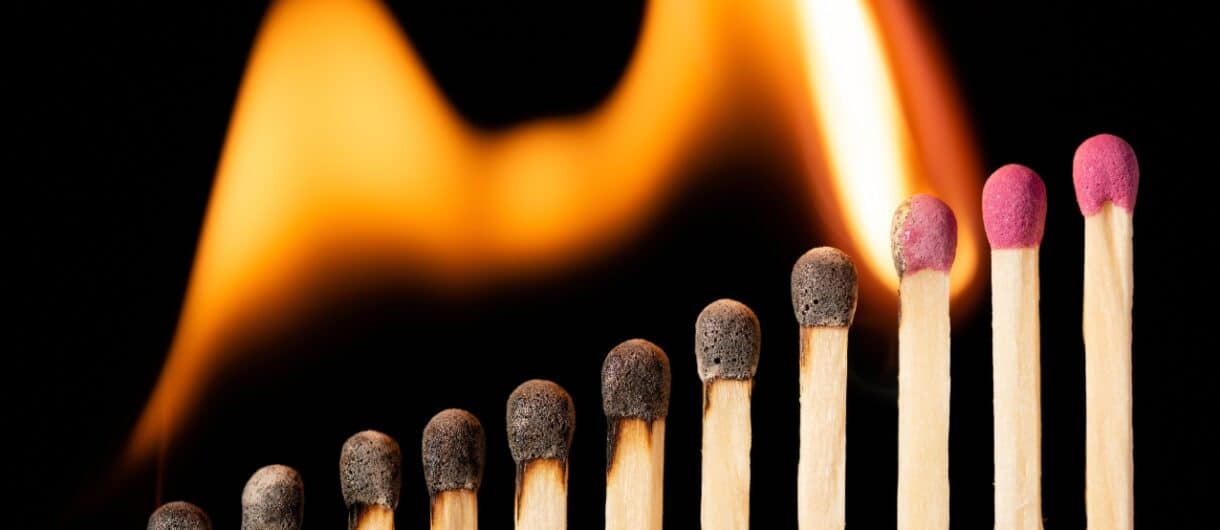
Fire spread: considerations to consider
Professionals working in the fire protection sector know well the physics and chemistry of fire, so they can understand concepts referring to the spread of fire in many different situations and scenarios, with the aim of implementing effective protective measures.
In this article we address what fire spread is, how long it takes for a fire to spread, what are the main variables that influence this spread, as well as the phases of the fire during one. Keep reading!
What is fire spread?
If propagating means causing something to spread or reach other places than where it occurs, fire spread consists of the extension or expansion of the fire area to other points other than the area in which it started.
For a fire to spread, it requires a fuel, an oxidizer, an increase in temperature, and a chain reaction consisting of the combination of fuel molecules with oxygen.
Types of fire spread
Heat can spread through three different pathways, which can also be applied to fire:
- Conduction: consists in the transfer of heat through a material. All materials can transmit heat, but each material has a different conductivity. When a material has properties that allow it to transmit heat easily, it is called a conductive material.
- Radiation: in this case, it is the heat waves that move, spreading the fire. These waves are transmitted in a straight line, but in all directions, heating the surrounding materials without the need of contact between them. Some materials, such as certain metals, can reflect these radiated waves.
- Convection: propagation by convection refers to the smoke and gases generated during a fire, which, as they are extremely hot, tend to rise, with the possibility of igniting whatever is in their path. Wind and air currents can influence the faster spread of a fire through convection.
¿How does a fire spread? How long does it take for a fire to spread?
After explaining the phenomenon of fire spread, and its different ways of spread, it is easy to understand that there is no exact formula to calculate the speed of spread of a fire.
The spread speed of a fire depends on multiple factors that can slow down or accelerate the progress of the flames.
It is the job of a fire protection engineer to calculate each variable as accurately as possible when deciding which systems need to be implemented.
Variables that influence the spread of a fire
- Combustible materials: The nature and composition of the materials present directly how are they going to influence on the speed propagation. Flammable materials, such as textiles and chemicals, can speed up the process.
- Environmental conditions: Temperature, humidity and wind speed are environmental factors that influence the spread of fire. Dry environments and strong winds can contribute to the quick spread of fire.
- Space geometry: The physical layout of a space, including obstacles and openings, can affect propagation. Narrow hallways, for example, can help the quick spread of fire.
- Detection, extinction and sectorization systems: The presence and effectiveness of automatic detection and suppression systems, as well as elements that create a barrier to prevent the progress of flames, such as fire curtains, are decisive when it comes to controlling the flames and the spread of fire.
To sum up, an exhaustive analysis of each scenario to be protected, with calculations and simulations of the movement of fire and smoke, will be key when determining the systems that are necessary to prevent the quick spread of fire.
At Tecnitex we are specialists in the manufacturing, engineering and installation of textile solutions for fire protection sectorization. Find out how we work!